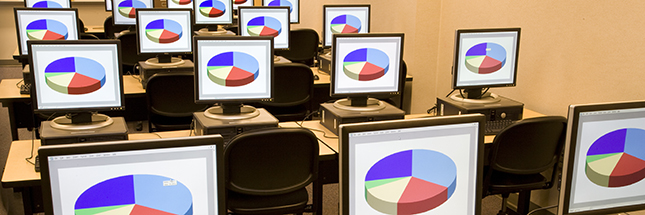Funding for Secondary Schools

Providing funding for public high schools is the primary responsibility of the state government. However, local governments often contribute a large portion of their revenue, and in many cases local governments account for the chief source of funding for high schools in the same district. Across the United States, figures from the 2011-2012 fiscal year indicated that municipal governments and state governments both contributed 44% of funding for public schools, accounting for 88% of all public school funding. The remaining 12% was contributed by the federal government.
Operational Costs
In the 2010-2011 academic year, average education expenditures in the United States amounted to $12,608 USD per public school student. Breaking down this figure further, $11,153 USD per student was allotted to the day-to-day, operational costs of running the school, such as utility costs and paying staff members. An additional $1,076 USD went to property or building expenditures. Finally, $379 USD per student was used to pay interest on school debts. In total, $632 billion was spent on these costs in the 2010 fiscal year. When considering the operational costs of schools, it is important to consider that expenditures vary extensively between states and even between districts in some cases. Public schools are responsible for securing sources of funding that are stable and sustainable. Moreover, every public school creates its own financial plan according to student needs and staff expertise.

Where Funding Comes From
Funding for public schools, including public high schools, comes from a variety of different sources. Often, municipal property taxes serve as a primary source of funding for schools. These are offered by local governments. At the state level, a percentage of income and sales taxes may also contribute to the operational costs of public schools. Some states also have revenues from state-run lotteries or casinos, a portion of which may be used to support the public school system. However, since these sources are less predictable, they are not as reliable a source of funding over time. Other sources of funding may include parking or other fees, interest on school investments, donations from local businesses, advertisements, or support from foundations. However, most of the time only a small percentage of school funding comes from these sources.
Private High Schools
In the United States, private high schools include schools whose facilities and operational costs are not covered by federal, state, or municipal governments. Many private schools in the United States are run by religious groups, institutions, or organizations. Most often, private schools charge students tuition in the same way as universities and other tertiary institutions. Tuition for private high schools is very high, with high-ranked schools in New York City charging at least $40,000 annually for day schools and upwards of $50,000 for boarding schools. In the case of a number of private schools, though, student tuition is not used to cover the school’s operating costs. These day-to-day costs are paid for by endowments, with some schools accruing millions of dollars through fundraising drives.
